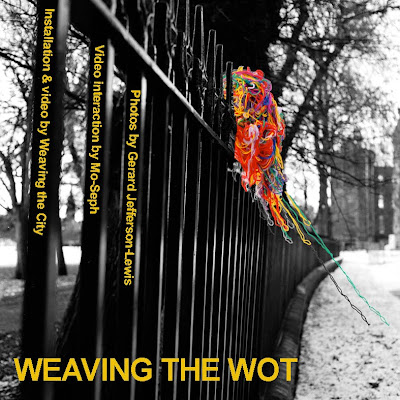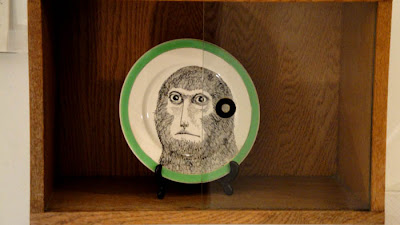My work is orbiting around a thin line between the physicality of an
object and it’s form. Translation of visual structure, from ephemeral
to solid. Learning, and where necessary, inventing a personal language
to communicate this transcription.
Culture enclosing nature,
To cultivate something means creating an opportunity for growth, a
setting for development.
I cultivate ideas, breed and raise them on the soil of culture.
Fine art approach blends in with mass production techniques
I focus on depictions of reality, that in context of art, become
reality themselves.THE WOT
Wednesday 13 April 2011
Piotr Skibinski
Stephanie Richardson
Jane Stewart
MUTE

Monday 14 February 2011
Literally






This month The WOT presents three current Edinburgh College of Art MFA Illustration students;
Friday 24 December 2010
Sunday 21 November 2010
Tobias Houlton

www.wix.com/tobiashoulton/tobiashoultonartscom
Tobias Houlton’s practice has typically been engaged in exploring the world of dream, nightmares and mortality, and how these can reflect upon our vision of material Earth.
The world encompasses a whirlwind of emotions and experiences that can be projected upon objects. Material entities of which inevitably provoke symbolic relevance to each individual. The artist, to reveal underlying truths about our human existence, has manipulated objects of familiarity into surreal metaphors. These pieces are to act as quiet statements regarding life in a hectic world.
Faith Limbrick
Thorunn Bara

Thórunn Bára explores conveying a perception of an uneasy relationship between nature and culture in her native environment of Iceland, a lack of understanding of interdependency of all things in the natural world.
She believes art has a place in facilitating the spectator to orientate themselves by having a closer look and using his or her own experience and thus having a chance to experience a collective responsibility for nature.
Lichens and mosses are considered low plants and often overlooked but they do have a pioneering role in the evolution of life by preparing the soil for rooting of higher plants and hence are both signs of the beginning and the end of civilizations.
Geological fillings in ordinary stones deep in the earth have long been sought after in our culture.
Manmade material meets objects from the natural word in a nonchalant way.
Sacha Imrie

A fascination with the documentation of everything, yet an apparent, paradoxical reluctance to give everything away, drives Sacha Imrie’s practice.
Her sculptural work revolves around the two-dimensional – using photography as an initial means of recording thoughts, surroundings, surfaces and whatever else may warrant archiving.
A bid to restrict this documented information, and select points of viewing, sees materials subjected to various processes of fabrication, layering and omission, until sculptural objects form.
Rachael Thomas and Rachel Charter
rachaellthomas.blogspot.com ; rachelcrcharter.blogspot.com
Rachael Thomas and Rachel Charter have been collaborating together for over a year, sharing an interest in mundane materials, lo-fi processes and site responsive installations. 13.11.10 takes the form of a large, high hung tapestry, composed of oil paint, flour and sugar applied directly onto sheets of tin foil. The work rests on the window ledge with an assortment of soap sediments and sugar coated objects.
The simple materials and plain form combine to create a work that not only takes into consideration the window’s architectural characteristics, but also draws upon the window as a space to promote commodities. Although non-functional and fragile, the everyday domestic materials offer connotations of desirable fabrics and cosmetics, with the title referencing a specific time of happening or an important appointment.
Nika Kupyrova

Found objects interest the artist by their deep-rooted familiarity and gradual re-shaping through possession. In her work, Kupyrova approaches both the mundane and the extravagant of domestics by constructing fictional “homes” which carry the traces of their previous inhabitants, or creating fake household objects, which manipulate the protective, comfort and totemistic qualities of their prototypes.
Magda Boreysza
Low Pressure

Low Pressure is an arts collective connected by friendship and an interest in creating exhibitions, events and happenings that provide a platform to support and inspire interaction between artists of various disciplines. Acting as a support network for each other they work both collaboratively and individually.
Low Pressure have produced a collection of objects from mundane materials that play with the idea of value. The outcome created is an illusion of luxury and value in each object emphasized by the laboured process and the manipulation of materials by the artists.
Sarah MacIntyre / Margaret McCormick / Sara Sinclair / Laura Sutherland
Konomi Kaneya
The principle concern of Konomi Kaneya’s current art practice is to explore various natural phenomena in specific stages of their development. She is principally interested in the flow of natural energy; this exploration allows her to understand the living and natural environment. It is important to depict the invisible flow of natural life and by the use of the “line” Kaneya can portray worlds, specific tensions, currents or rhythms.
Kirsty Sumerling

Kirsty Sumerling’s jewellery collection focuses on the beauty of surface decay and the resulting work appears as a series of snapshots of surfaces frozen in time. This installation shows the extensive samples that were produced, informing the final work.
Intrigued by the effects of time and decay Summerling explored this condition in enamel and chemical patina, playing with both control and unpredictability. The embedded patina and change within a surface implies that a transformation has occurred over a period of time.
The resulting work is unpredictable and unexpected; a product of a process deliberately out of her control.
Katheryn Wiggins
You are human.
Kathryn Wiggins created these images to illustrate what that really means.
Among the visual rhythms, you will come across undecipherable notes and pictures that do not allow illusion, inspired by ancient artefacts we cannot decode.
At the same time, these elements provide innate resonation while invoking a deep sense of having seen unmistakable relics of the human spirit.
Eric Schumacher

Eric Schumacher's work is strongly influenced by experiences gathered from explorations of urban areas. Different kinds of architecture and architectural improvements, as well as furnishing of interiors and other home personification are surveyed with an analysis of the different styles of design found throughout the decades and centuries.
The work shown at the WOT is considered by the artists as a 2D sketch of found images and materials and plays with the idea of an absurd juxtaposition of the human evolution and its utopian visions.
Becky Campbell and Sigrun Guðmundsdóttir
becky-campbell.blogspot.com ; sigr.wordpress.com
“Being immersed outside in water at Sundlaugin í Vík í Mýrdal I was able to look out to the mountain Reynisfjall and I knew that the sea was close by. The day before was the first of a road trip travelling towards the east of Iceland and passing this village a lullaby had been sang to me: remnants of that melody echoed. Suddenly I was fully aware of physically engaging with the tactility of the water- I wasn’t only looking at or only touching the ground with my feet. I was making my own stories I could then tell to others.”
Sigrún Guðmundsdóttir and Becky Campbell began collaborating in Reykjavik in January 2010 following a journey through the south of Iceland. Plants have been sent from Iceland which Campbell has reconfigured as props to be returned to Reykjavik for a performance by Guðmundsdóttir.



